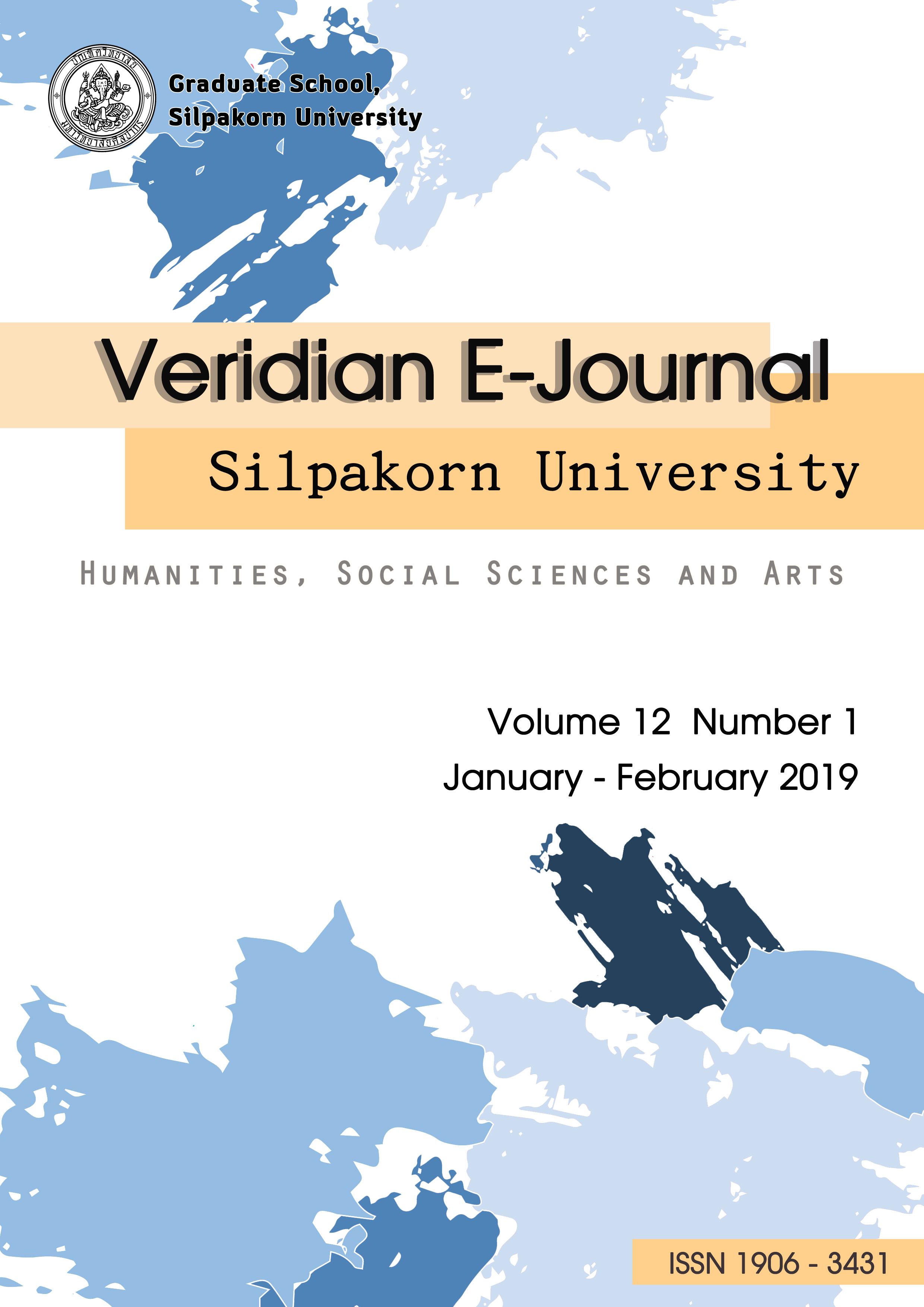Social and Cultural Reflection of Sathingphra Peninsula from Local Pavilion (Salaklanghon)
Main Article Content
Abstract
The research aimed to study sathingphra peninsula’s social and cultural lift reflection of a pavilion in a local style (Salaklanghon). in the Sating Phra peninsula area including four districts of Singha Nakhon, Sathing Phra, Krasae Sin, and Ranot. The field data was collected by the interviewing of 65 people living near the 29 utilized and occupied pavilions which reflected the social and cultural circumstances, together with observing and photo shooting. The data was analyzed in the form of descriptive analysis. The findings showed as follows. Reflections on family, found that people in a household have love, unity and respect for the elderly by staying together as an extended family. Reflection of race, found that there have been people of Chinese descent in sathingphra peninsula for centuries. Reflections of Psychological, found that people with generous hospitality, unity are interested in charity. Reflections of Economic, found that they reflect the status of the well-being of the Creator and the villagers have a folk career in animal husbandry, Farming and Fisheries. Reflection of Politics, found that villagers get access to the community services by the government and have the opportunity to access local politicians. Reflections of belief and religion, found that the community has a long standing culture, strong ties to Buddhism, belief in the goodness and adherence to the traditions of the local primordial. Reflections of the Aesthetic, Found that the Creator of the pavilion in a local style (Salaklanghon) or villagers have love, beauty, Skilled technicians, arts and a lot of love and appreciation for nature.
Article Details
References
Fine Arts Department. (1979). Environmental studies at the site of Sathingphra archaeological excavation and nearby archaeological sites. Bangkok: Office of the Secretary, Fine Arts Department.
Guy Trebui. (1983). The improved system for agricultural land and evolution of recently time in Sathingphra. Translated by Somyos Tungwah and Ingorn Trebui. Songkhla: Faculty of Natural Resources, Prince of Songkla University.
Karn Phiancharoen. (2000). “A study of public rest-houses (Salaklanghon) in the Sathingphra peninsula Songkhla province” Master thesis, Thai Studies, Faculty of Humanities and Social Sciences, Thaksin University.
Kitti Chaowana and Cattaleeya Jiraprasertkun. (2017). “Observations from the study of the phenomenon of public space in Kiriwong Village, Nakhon Si Thammarat” Veridian E- Journal, Silpakorn University Vol 10, No 3 (September-December): 1704
Prathum Chumpengpan. (1985). Situation in social and culture of the surrounding Songkhla Lake. In The history and archeology Sathingphra Peninsula,54-56. Bangkok: Rungsaeng Printing.
Rathirat Kheawmesuan. (2016) “Defining Local Heritage in the Case of Bypassed Towns: A case study in Photharam community, Ratchaburi province” Veridian E-Journal, Silpakorn University Vol 9, No 5 (July-December) : 197
Srisak Wanlipodom. (1985).The first historical community in the vicinity of Sathingphra Peninsula and nearby. In The history and archeology Sathingphra Peninsula,28-31. Bangkok: Rungsaeng Printing.
Sutthiwong Pongpaiboon. (1986). “Salaklanghon.” Thailand Cultural Encyclopedia of Southern 1986 Vol 8: 3407-3410
. (1986). “Sathingphra, district.”Thailand Cultural Encyclopedia of Southern 1986 Vol 9: 3663-3671
Tharaphong Srisuchat. (1986).“Sathingphra.” Thailand Cultural Encyclopedia of Southern 1986 Vol 9: 3656-3663.
